#frog species
Explore tagged Tumblr posts
Text
25th of October 2024: Red-spotted Glassfrog

Halloween isn’t just about creepy invertebrates from the deep, so for this Frog Friday, here’s the Red-spotted Glassfrog (Nymphargus grandisonae) a species of frog named such due to their translucent skin, meaning that if you look closely, you can see some their bones and internal organs. You can also use the patterns of red spots on their back to identify distinct individuals of this species [1].
They are very territorial, and the males of the species can frequently be found fighting other males, at times holding one another in a wrestling position for several hours, oftentimes while dangling from leaves. The forms of wrestling can be quite variable, but have been documented on video, which you can see here. This can lead to injury to one another, as they have spikes on their arms they ram into their opponent [2]. They were also the first glassfrog (a family encompassing over 150 species) to be observed fighting another species of glassfrog, Espadarana prosoblepon [3].
They don’t just fight but also mate on leaves (as well as rocks). After mating, they female will deposit her eggs there or somewhere close, but above a water source [4]. If the eggs survive and do not fall victim to spittlebug flies (Cladochaeta) [1], the tadpoles will then be able to drop into the water below where they spend their time in the sand or leaf litter before completing their development [5].
They are found in Columbia and Ecuador, specifically on the Western slopes of the Western and Central Cordilleras. While they are sometimes found near roads and appear to be tolerant to habitat disturbances, they are always found near the forest [6].
Sources: [1] [2] [3] [4] [5] [6] [Image]
#critter of the day#critteroftheday#halloween critters#frog friday#frog#frog facts#frog species#herpetology#animal species#zoology#animal#animal facts
5 notes
·
View notes
Text
Meet the seven new frog species we just named after iconic Star Trek captains!
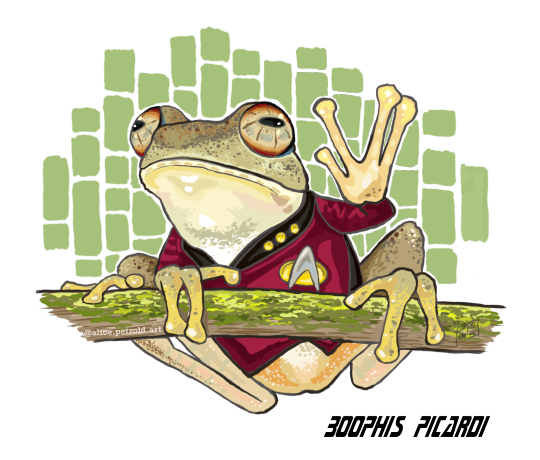
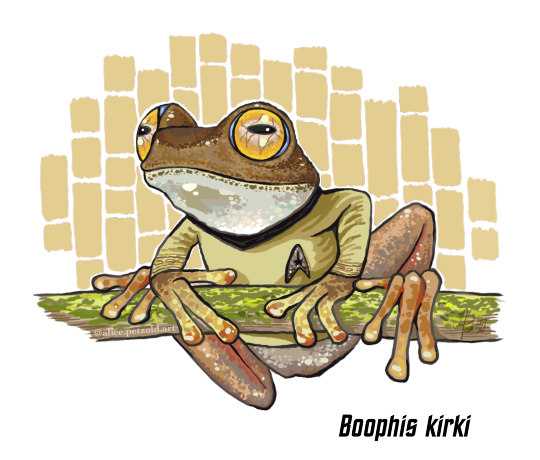
Artwork by A. Petzold, CC BY-ND 4.0
At the right time of year along rushing streams in the humid rainforests that stretch the length of Madagascar's eastern and northern mountain ridges, otherworldly trills of piercing whistles can be heard.
Are they birds? Insects? Communicator beeps? Tricorder noises?
No, they're little treefrogs!
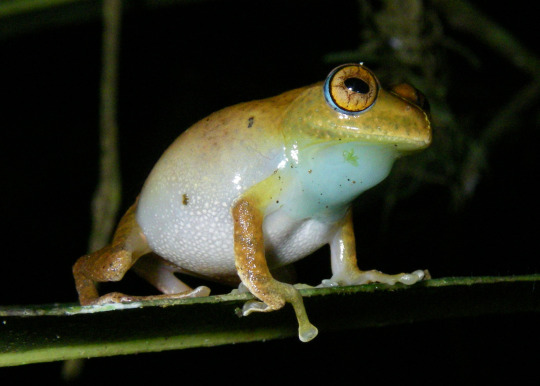
Boophis janewayae. Photo by M. Vences, CC BY-SA 4.0
Until recently, we thought all of the populations of these little brown frogs across the island were one widespread species, Boophis marojezensis, described in 1994. But genetics in the early 2000s and 2010s showed that there were several species here, not just one.
Now my colleagues and I have shown that they are in fact eight separate species, each with unique calls!
These whistling sounds reminded us so much of Star Trek sound effects that we decided to name the seven new species after Star Trek captains: Boophis kirki, B. picardi, B. janewayae, B. siskoi, B. pikei, B. archeri, and B. burnhamae.
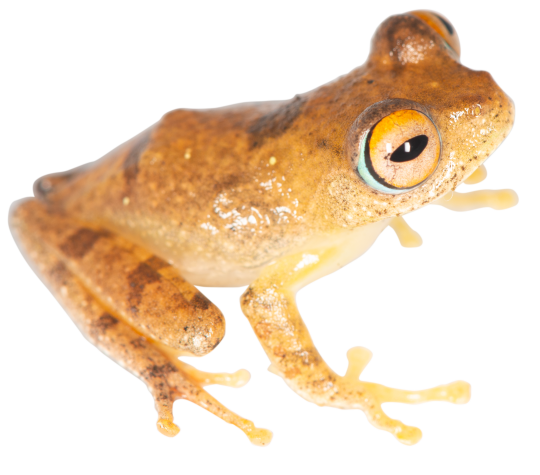



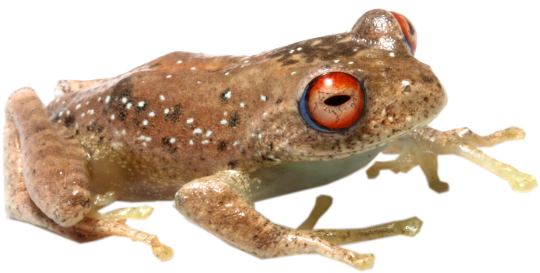


Photos of all new species described by Vences et al. 2024. CC BY-SA 4.0
I subtly and not-so-subtly built some Star Trek references into the paper, but probably the best one is this one:
'Finding these frogs sometimes requires considerable trekking; pursuing strange new calls, to seek out new frogs in new forests; boldly going where no herpetologist has gone before.'
— Vences et al. 2024
There’s a real sense of scientific discovery and exploration here, which we think is in the spirit of Star Trek.
Of course, it doesn't hurt that there are at least two Trekkies amongst the authors (including yours truly). As fans of Star Trek, we are also just pleased to dedicate these new species to the characters who have inspired and entertained us over the decades.
On a personal note, this marks a milestone for me, as it means I have now described over 100 frog species! I am very pleased that the 100th is Captain Janeway's Bright-eyed Frog, Boophis janewayae (if you count them in order of appearance in the paper)—she is probably my favourite captain, and I really love Star Trek: Voyager.
You can read more about the discovery of these new species on my website! You can also read the Open Access paper published in Vertebrate Zoology here.
#news#breaking news#Star Trek#new species#science#animals#WAKE UP BABE NEW FROGS JUST DROPPED#Boophis#Boophis janewayae#Boophis burnhamae#Boophis siskoi#Boophis pikei#Boophis archeri#Boophis kirki#Boophis picardi#in which nerds bring their nerdiness to work#Engage#WERE YOU WATCHING THIS SPACE?#THE FINAL FRONTIER?#DID YOU GET THE REFERENCE‽#Every time I have used that tag it has made me giddy with glee#you thought I was just goofin'#but I was FORESHADOWING#There's frogs in that nebula
8K notes
·
View notes
Text

working on a new print
20K notes
·
View notes
Text
"For over a decade, the Yosemite toad has been recognized as a federally threatened species, after experiencing a 50% population decline during the Rim Fire of 2013.
The wildfire, which encompassed a mass of land near Yosemite National Park, made the amphibian species especially vulnerable in its home habitat.
Native to the Sierra Nevada, the toads play a key role in the area’s ecosystem — and conservationists stepped in to secure their future.
In 2017, the San Francisco Zoo’s conservation team began working with the National Park Service, Yosemite Conservancy, U.S. Fish & Wildlife Service, California Department of Fish & Wildlife, and the U.S. Geological Survey.
The goal of all of these stakeholders? To raise their own Yosemite toads, re-establishing a self-sustaining population in the wild.
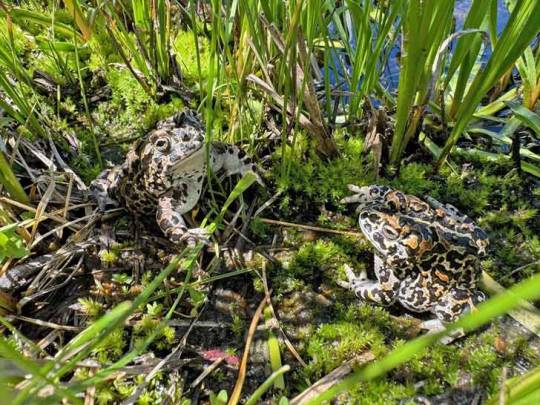
“Over the past several years, SF Zoo’s conservation team has been busily raising hundreds of these small but significant amphibians from tadpole stage, a species found only in the Sierra Nevada, for the purpose of reintroducing them to an area of Yosemite National Park where it was last seen 11 years ago,” the zoo shared on social media.
By 2022, a group of toads were deemed ready for release — and at the end of June of this year [2024], 118 toads were flown via helicopter back to their habitat.
“It’s the first time anyone has ever raised this species in captivity and released them to the wild,” Rochelle Stiles, field conservation manager at the San Francisco Zoo, told SFGATE. “It’s just incredible. It makes what we do at the zoo every day worthwhile.”
Over the past two years, these toads were fed a diet of crickets and vitamin supplements and were examined individually to ensure they were ready for wildlife release.
Zoo team members inserted a microchip into each toad to identify and monitor its health. In addition, 30 of the toads were equipped with radio transmitters, allowing their movements to be tracked using a radio receiver and antenna.
The project doesn’t end with this single wildlife release; it’s slated to take place over the next five years, as conservationists continue to collect data about the toads’ breeding conditions and survivability in an ever-changing climate. They will also continue to raise future toad groups at the zoo’s wellness and conservation center...
While the future of the Yosemite toad is still up in the air — and the uncertainty of climate change makes this a particularly audacious leap of faith — the reintroduction of these amphibians could have positive ripple effects for all of Yosemite.
Their re-entry could restore the population balance of invertebrates and small vertebrates that the toads consume, as well as balance the food web, serving as prey for snakes, birds, and other local predators.
“Zoo-reared toads can restore historic populations,” Nancy Chan, director of communications at the San Francisco Zoo, told SFGATE.
Stiles continued: “This is our backyard, our home, and we want to bring native species back to where they belong.”
-via GoodGoodGood, July 11, 2024
#yosemite#yosemite national park#california#united states#amphibian#frogs and toads#frogblr#frogposting#toadblr#toad#endangered species#wild animals#biodiversity#wildlife conservation#wildlife#good news#hope
1K notes
·
View notes
Text
How many relatives does Kermit have?

Perfection
2K notes
·
View notes
Note
I got a pet pac-man frog recently and for the life of me I cannot come up with a good name for them, so I'm gonna roll the BLAST dice and see what comes up from this :D
Their too young to sex for now, and they're a coffee morph (Which means their much more brown and less green than normal), and I love them dearly already

They're still pretty small, so they're in a small little plastic container for now until they grow big enough to be in the 20 gallon-long tank I have
String identified: gt a t ac-a g ct a t cat c t a g a t, ' ga t AT c a at c t : T t g t , a t' a c (c a t c a g ta a), a t a aa T' t tt a, t' a a tt atc cta t t g g g t t ga-g ta a
Closest match: Pterostichus madidus genome assembly, chromosome: 8 Common name: Black Clock Beetle

(image source)
#tumblr genetics#genetics#biology#science#asks#requests#sent to me#frogs#bugs#insects#beetles#black clock beetle#<- i did not read that correctly the first time. hm.#from the species name; maddie is a suggestion.
780 notes
·
View notes
Text

day 1421
#uh just a heads up if you expand the tags to see all there's. a lot. very long#amphibian#frog#poison dart frog#based on my most popular frog to date (day 651)#inspired by everyone pointing out what they think it looks like#here's a fun secret fact the original guy is actually a phantasmal poison dart frog (Epipedobates tricolor)#(according to the original artists title of the drawing)#not Anthony's poison arrow frog (Epipedobates anthonyi)#i feel too awkward to really point it out though because they look the exact same. i cannot tell if there is a difference#im half convinced the same frog was just discovered and named twice#its very curious btw if you go on the (english) wikipedia page for either species it doesn't mention the other#while hereptiles.info (no idea if this is a trustworthy site) lists both names as common names for the same frog (incorrectly??)#while inaturalist lists them as two different frogs. curiously with tricolor having wayyyyy fewer photos#ok anyway that's my rant i went on a whole journey trying to figure out if these are the same frog or not and i have no answer#i did some more 'research' and i am more confused. some sources seem to imply they are now considered the same species ( e. tricolor)#i think my conclusion is i am willing to agree the drawing looks more like e. anthonyi. it seems like tricolor is generally less vibrant re#and the white is darker and more green?#i feel like thumblr should stop me from typing more in the tags at this point this is a whole essay#at this point i am failry convinced this is specifically the Santa Isabel frog. isthat the real subspecies or morph or whatever#or just the name pet sites are using to sell it??#i even found some sources (frog selling websites) refering to it as “Epipedobates Anthonyi 'Santa Isabel' Phantasmal Poison Dart Frog” lol#Anyways if you read this far hi. species are confusing. i am not a frog scientist#the first few tags are like an hour old now i just kept trying to figure it out and adding more tags
3K notes
·
View notes
Text

How I think that top-secret time on Kashyyyk would have gone. Yoda would probably like the other three but Crosshair would be more likely to drive him to insanity.
#sw tbb#the bad batch#tcw tech#tcw crosshair#tcw hunter#tcw wrecker#Yoda#kashyyyk#Crosshair is the king of the snarks and you cannot tell me otherwise#he is such a menace#His bros love him for it but everyone else feels like strangling him within ten minutes#Yoda eats frogs like Grogu#because it's even weirder if it's not a species thing and Din's kid just eats frogs because he likes it#toothpicks and backtalking#Crosshair does not care that this dude is a Jedi and will happily roast him until they reach their destination
282 notes
·
View notes
Text

Oh so THAT'S what that's called!! Now let's do some reading...

Oh wow, she just goes:
"Yeahhh... I'm really not looking for somebody to fertilize my eggs right now. Uh...."
*vibrates intensely to make him leave*
Like that's... definitely one way of dealing with awkward situations. I should try it sometime.
I wish reproductive biology wasn’t so fascinating. Like yes actually, amplexus is really funny and neat to me. The frogs turned mating into a marathon. Your boyfriend who is 30% smaller than you has turned into a backpack. You’re just gonna have to carry him until you’re done.
19 notes
·
View notes
Text
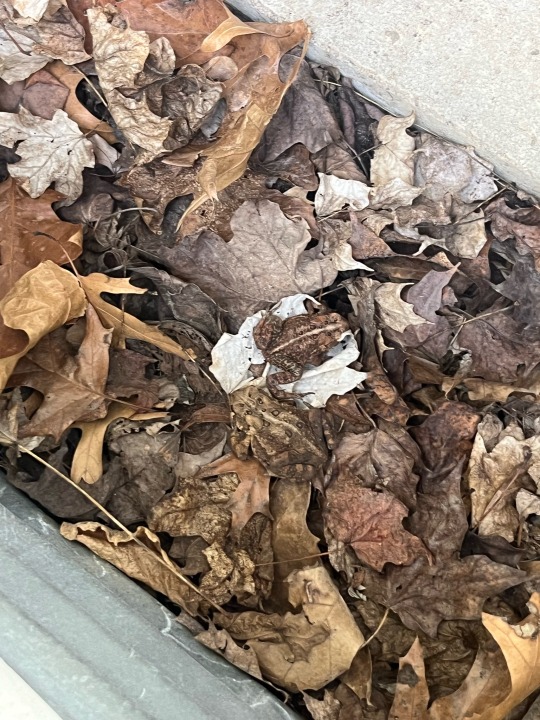

Toads I think? I found them while doing lawn work. Anyone able to ID them?
Area is Southern Michigan
Enjoy the little amphibians though
849 notes
·
View notes
Text
9th of October 2024: Cophixalus misimae

It may not yet be Friday, but that doesn’t mean we can’t have a frog (as a treat). Here’s Cophixalus misimae, who unfortunately does not have a common name, but may also go by the name Asterophrys misimae [1]. Also apologies for the black and white picture, but I’m afraid that’s all there is of them. The main colour feature they have is the dark brown band going along their side [2].
As is to be expected of microhylid frogs, they’re rather small, with a maximum length of 2 cm. You can find them on the rainforest floor of the island of Misima, a small island of Papua New Guinea, east of New Guinea. They have a pulsing call that can last up to 5 seconds. Interestingly, they are quite similar to Batrachylodes trossulus despite not being genetically close. This is likely an indicator of how the habitat made their body shapes and colour patterns converge [2].
Unfortunately, they are considered critically endangered. While it’s likely their range reaches beyond the 3 square kilometres they’ve been found in thus far, they’re also probably not spread across the entire island. They have been found in rainforest regrowth near rainforest, but open areas are probably not a suitable habitat for them, meaning the deforestation and habitat degradation presents a real threat to them [3].
Sources: [1] [2] [3] [Image]
#critter of the day#critteroftheday#frog#frog species#frog facts#amphibia#amphibian species#herpetology#animal species#zoology#animal#animal facts#endangered species#endangered animals
3 notes
·
View notes
Text
Dandelion News - March 8-14
Like these weekly compilations? Tip me at $kaybarr1735 or check out my Dandelion Doodles!
1. Caribbean reef sharks rebound in Belize with shark fishers’ help

“Caribbean reef shark populations have rebounded beyond previous levels, more than tripling at both Turneffe and Lighthouse atolls[…. The recovery] arose from a remarkable synergy among shark fishers, marine scientists and management authorities[….]”
2. Landmark Ruling on Uncontacted Indigenous Peoples’ Rights Strikes at Oil Industry
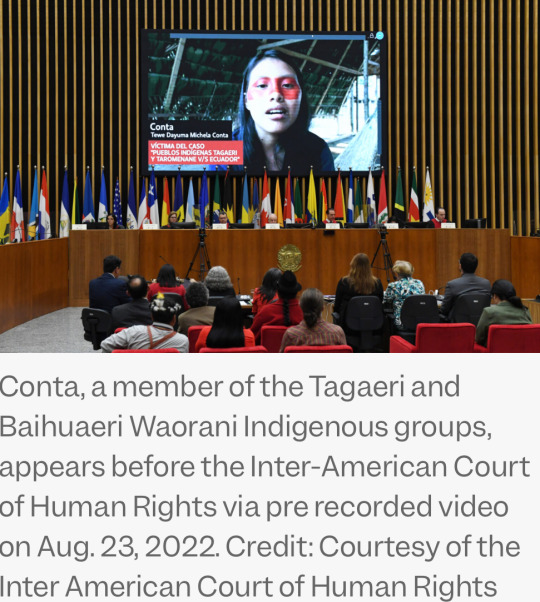
“[T]he Ecuadorian government [must] ensure any future expansion or renewal of oil operations does not impact Indigenous peoples living in voluntary isolation. [… E]ffective measures must be adopted to prevent serious or irreversible damage, which in this case would be the contact of these isolated populations,” said the opinion[….]”
3. America's clean-energy industry is growing despite Trump's attacks. At least for now

“The buildout of big solar and battery plants is expected to hit an all-time high in 2025, accounting for 81% of new power generation[….] The industry overall has boomed thanks to falling technology costs, federal tax incentives and state renewable-energy mandates.”
4. Study says endangered Asian elephant population in Cambodia is more robust than previously thought

“A genetic study of Asian elephants […] reveals a larger and more robust population than previously thought, raising hopes the endangered species could slowly recover. […] “With sufficient suitable habitat remaining in the region, the population has the potential to grow if properly protected,” the report concludes.”
5. Scientists are engineering a sense of touch for people who are paralyzed

“[Engineers are] testing a system that can restore both movement and sensation in a paralyzed hand. [… A]fter more than a year of therapy and spinal stimulation, [… h]is increased strength and mobility allow him to do things like pet his dog. And when he does, he says, "I can feel a little bit of the fur."“
6. Florida is now a solar superpower. Here’s how it happened.
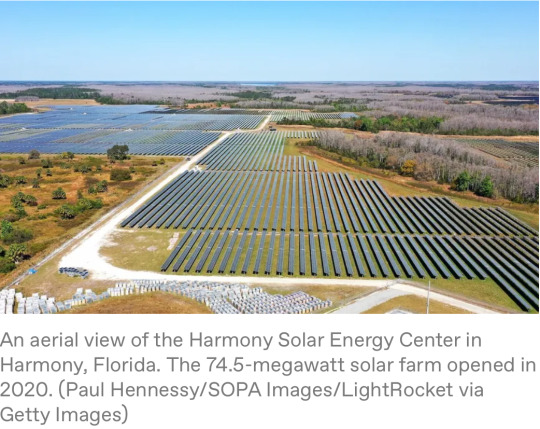
“In a first, Florida vaulted past California last year in terms of new utility-scale solar capacity plugged into its grid. It built 3 gigawatts of large-scale solar in 2024, making it second only to Texas. And in the residential solar sector, Florida continued its longtime leadership streak.”
7. Rare frog rediscovered after 130 years
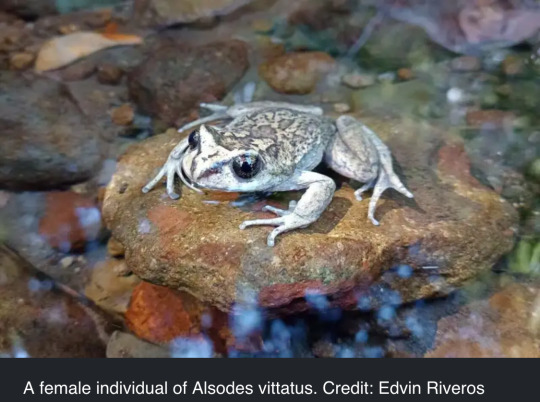
“The researchers discovered two populations of the frog[….] "The rediscovery of A. vittatus allowed us to obtain, more than a century after its description, the first biological and ecological data on the species.” [… S]hedding light on where and how they live is the first step in protecting them.”
8. Community composting programs show promise in reducing household food waste
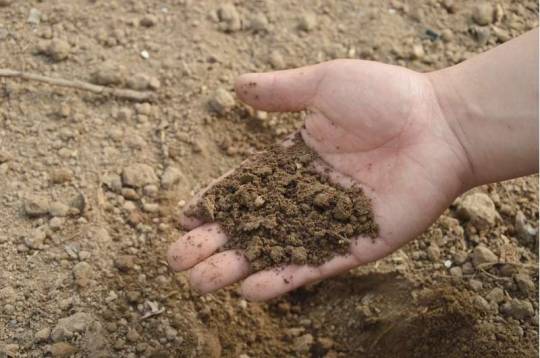
“The program [increased awareness and reduced household waste, and] also addressed common barriers to home composting, including pest concerns and technical challenges that had previously discouraged participants from composting independently.”
9. Pioneering Australian company marks new milestone on “mission” to upcycle end-of-life solar panels
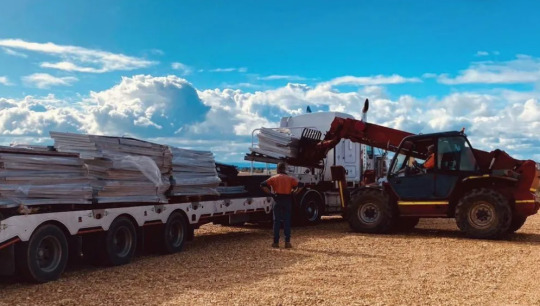
“[…] SolarCrete – a pre-mixed concrete made using glass recovered from used solar panels – will form part of the feasibility study[….] A second stage would then focus on the extraction of high value materials[…] for re-use in PV and battery grade silicon, [… and] electrical appliances[….]”
10. Beavers Just Saved The Czech Government Big Bucks
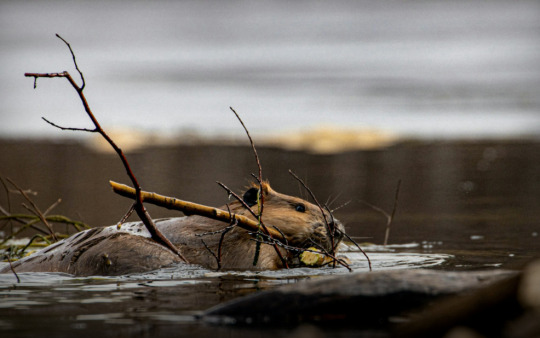
“The aim was to build a dam to prevent sediment and acidic water from two nearby ponds from spilling over, but the project was delayed for years due to negotiations over land use[….] Not only did the industrious rodents complete the work faster than the humans had intended, they also doubled the size of the wetland area that was initially planned.”
March 1-7 news here | (all credit for images and written material can be found at the source linked; I don’t claim credit for anything but curating.)
#hopepunk#good news#shark#fishing#nature#ecuador#first nations#oil drilling#clean energy#solar energy#solar power#elephants#elephant#conservation#animals#science#medicine#paralyzed#florida#solar panels#frogs#endangered species#endangered#compost#community#australia#recycling#beaver#habitat restoration#beaver dam
140 notes
·
View notes
Text
BOOPHIS SNOOT!

Specifically, an undescribed Boophis from the B. goudotii species group that I discovered in 2015/2016.
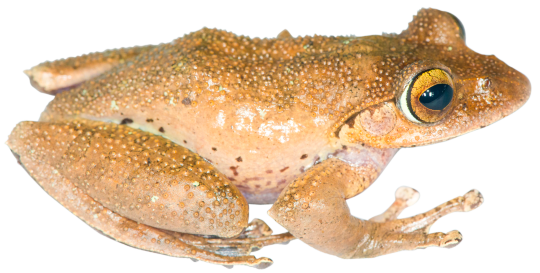
#boop#boop his snoot#Boophis#frog#frogs#a rare and serendipitous occasion#for this glorious pun#zoology#animals#herpetology#undescribed species#new species#taxonomy#I don't remember catching all the frogs I've ever caught#but I do remember catching this one#it was one or two metres above my head#and we had to whack the branch it was on to get it to come down#and then frantically search for it after it landed#I think it landed on someone's backpack in the end#a marvellous and bizarre creature#hopefully to be described in the next few years
3K notes
·
View notes
Text
Species challenge! 🦊✨

I asked my followers on Twitter and Bluesky for animal suggestions (especially less common ones in the furry fandom) and this was the result :3 it was very fun, should repeat it sometime!
#sarielsnowingsart#furry art#furry#species challenge#queer artist#trans artist#anthro#anthro art#fursona#iguana#platypus#potoo#buffalo#deer#bat#sooty owl#llama#maned wolf#poison dart frog#binturong#capybara
2K notes
·
View notes
Note
have you done lake titicaca frogs? they’re such little freaks
Oh wow, I'd never heard of these! They are so silly looking :)


Photos thanks to Zoo Berlin & Joel Sartore from National Geographic!
#endangered species#south american frog#lake titicaca#lake titicaca frog#titicaca water frog#endangered animal#endangered#frog#frogs#south american wildlife#anura#amphibian#amphibians#animal polls#poll blog#my polls#animals#polls#tumblr polls
162 notes
·
View notes
Text
Pairing frogs and toads together might conjure memories of Arnold Lobel’s beloved characters — dressed to the nines in caramel coats and polyester — biking off toward adventure.
But in the animal world, frogs and toads on nearly every continent are facing a much more harrowing adventure: a decades-long fight against a mysterious fungal virus that has afflicted over 500 amphibian species.
Since the 1990s, scientists estimate that the chytridiomycosis disease caused by the fungal pathogen Bd (Batrachochytrium dendrobatidis) has led to the extinction of 90 amphibians. One of the lost species includes the Panamanian golden frog, which hasn’t been spotted in the wild since 2009.
Fortunately, a new research study has finally pinpointed the virus that has been infecting fungal genomes for decades.
“Bd is a generalist pathogen and is associated with the decline of over 500 amphibian species…here, we describe the discovery of a novel DNA mycovirus of Bd,” wrote Mark Yacoub — the lead author of the study and a microbiology doctoral student at the University of California, Riverside.
In an interview with UC Riverside News, Yacoub said that he and microbiology professor Jason Stajich observed the viral genome while studying the broader population genetics of mycovirus (viruses of fungi).
The discovery will undoubtedly have monumental impacts on future amphibian conservation efforts. This includes the possible launching of new research studies into fungal species strains, the practice of cloning and observing spores, and engineering a solution to the virus.
But Yacoub cautioned that this is only the beginning.
“We don’t know how the virus infects the fungus, how it gets into the cells,” Yacoub said. “If we’re going to engineer the virus to help amphibians, we need answers to questions like these.”
Still, as scientists strengthen conservation efforts to save frogs and toads (and salamanders too!) they also appear to be saving themselves. Yacoub pointed out several amphibian species around the world have begun exhibiting resistance to Bd.
“Like with COVID, there is a slow buildup of immunity,” Yacoub explained. “We are hoping to assist nature in taking its course.”

Pictured: A Golden poison frog — one of the many species endangered by chytridiomycosis — in captivity.
Why are frogs and toads so important?
From the get go, every amphibian species plays an important role in their local ecosystem. Not only are they prey for a slew of animals like lizards, snakes, otters, birds, and more, but in an eat-or-be-eaten world, frogs and toads benefit the food chain by doing both.
Even freshly hatched tadpoles — no bigger than a button — can reduce contamination in their surrounding pond water by nibbling on algae blooms.
As they grow bigger (and leggier), amphibians snack on whatever insect comes their way, greatly reducing the population of harmful pests and making a considerable dent in the transmission malaria, dengue, and Zika fever by eating mosquito larvae.
“Frogs control bad insects, crop pests, and mosquitoes,” Yacoub said. “If their populations all over the world collapse, it could be devastating.”
Yacoub also pointed out that amphibians are the “canary in the coal mine of climate change,” because they are an indicator species. Frogs and toads have permeable skin, making them sensitive to changes in their environment, and they also rely on freshwater.
When amphibians vanish from an ecosystem, it’s a symptom of greater environmental issues...
Herpetologist Maureen Donnelly echoed Yacoub’s sentiments in an interview with Phys Org, noting that when it comes to food chains, biodiversity, and environmental impact, the role of frogs and toads should not be overlooked.
“Conservation must be a global team effort,” Donnelly said. “We are the stewards of the planet and are responsible for all living creatures.”
-via GoodGoodGood, April 22, 2024
#frog#frogs#toads#frogs and toads#conservation#biodiversity#herpetology#mycology#fungi#endangered species#extinction#ecosystems#climate change#environment#biology#environmental science#ecology#good news#hope#frogblr#frog blogging
354 notes
·
View notes